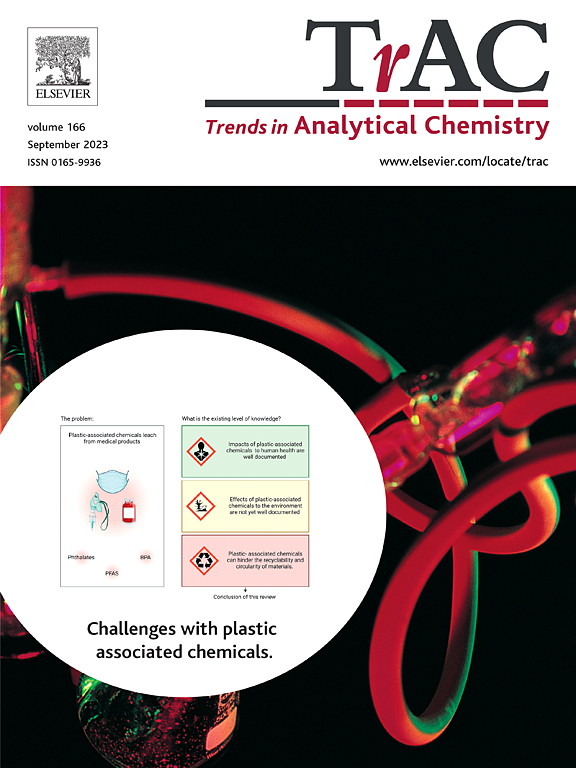Advances in molecular assays and biosensors for circular RNA-based diagnostics and therapeutic monitoring
IF 11.8
1区 化学
Q1 CHEMISTRY, ANALYTICAL
引用次数: 0
Abstract
Circular RNAs (circRNAs) have emerged as pivotal regulators in various biological processes and disease states, including cancer, neurodegenerative disorders, and cardiovascular diseases, making them promising biomarkers for early diagnosis and therapeutic monitoring. This review provides a comprehensive overview of traditional and emerging molecular assays and biosensors for circRNA detection, critically examining key challenges in their development and application. Conventional methods such as RT-PCR, Northern blot, and in situ hybridization remain prominent, while the emerging techniques include reverse transcription-based and non-reverse transcription-based assays, hybrid systems, and point-of-care biosensors. RT-RCA and RT-LAMP have shown potential as valuable alternatives to RT-PCR. In hybrid systems, where target recognition and amplification are performed using different assay approaches, RCA and LAMP are particularly promising for the amplification stage. Non-RT-based assays are gaining significant research attention due to their ability to avoid inaccuracies associated with reverse transcriptase use. Among these, CRISPR-Cas13 and duplex-specific nuclease (DSN)-based assays exhibit notably high sensitivity. Molecular assays using enzyme probe ligation techniques for target recognition provide superior detection accuracy, a feature comparable to nanoString technology. Additionally, microfluidics and nanomaterials have been employed to enhance the performance of circRNA point-of-care sensors. Despite these advances, practical circRNA detection methodologies still face challenges, such as long assay times, limited multiplexing capabilities, and complex circRNA enrichment procedures. This review addresses current technological hurdles and outlines future perspectives in circRNA analysis. Innovation in methodologies, along with the discovery and validation of new circRNA markers, can accelerate the translation of circRNA detection methods into clinical and biomedical applications.
求助全文
约1分钟内获得全文
求助全文
来源期刊

Trends in Analytical Chemistry
化学-分析化学
CiteScore
20.00
自引率
4.60%
发文量
257
审稿时长
3.4 months
期刊介绍:
TrAC publishes succinct and critical overviews of recent advancements in analytical chemistry, designed to assist analytical chemists and other users of analytical techniques. These reviews offer excellent, up-to-date, and timely coverage of various topics within analytical chemistry. Encompassing areas such as analytical instrumentation, biomedical analysis, biomolecular analysis, biosensors, chemical analysis, chemometrics, clinical chemistry, drug discovery, environmental analysis and monitoring, food analysis, forensic science, laboratory automation, materials science, metabolomics, pesticide-residue analysis, pharmaceutical analysis, proteomics, surface science, and water analysis and monitoring, these critical reviews provide comprehensive insights for practitioners in the field.
 求助内容:
求助内容: 应助结果提醒方式:
应助结果提醒方式:


